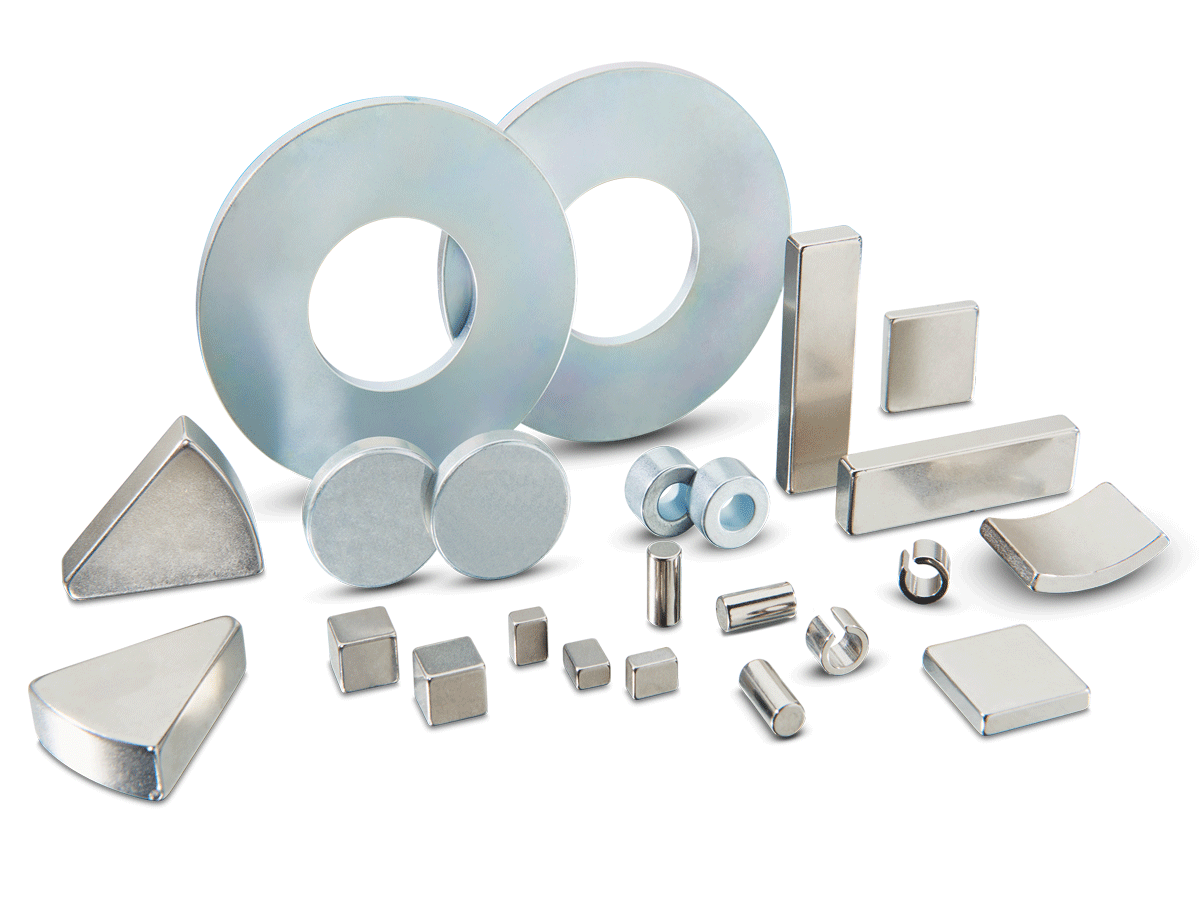
Neodymium magnets - NdFeB
If a permanent magnet has to be small, lightweight and super strong. Contain the highest magnetic energy density.

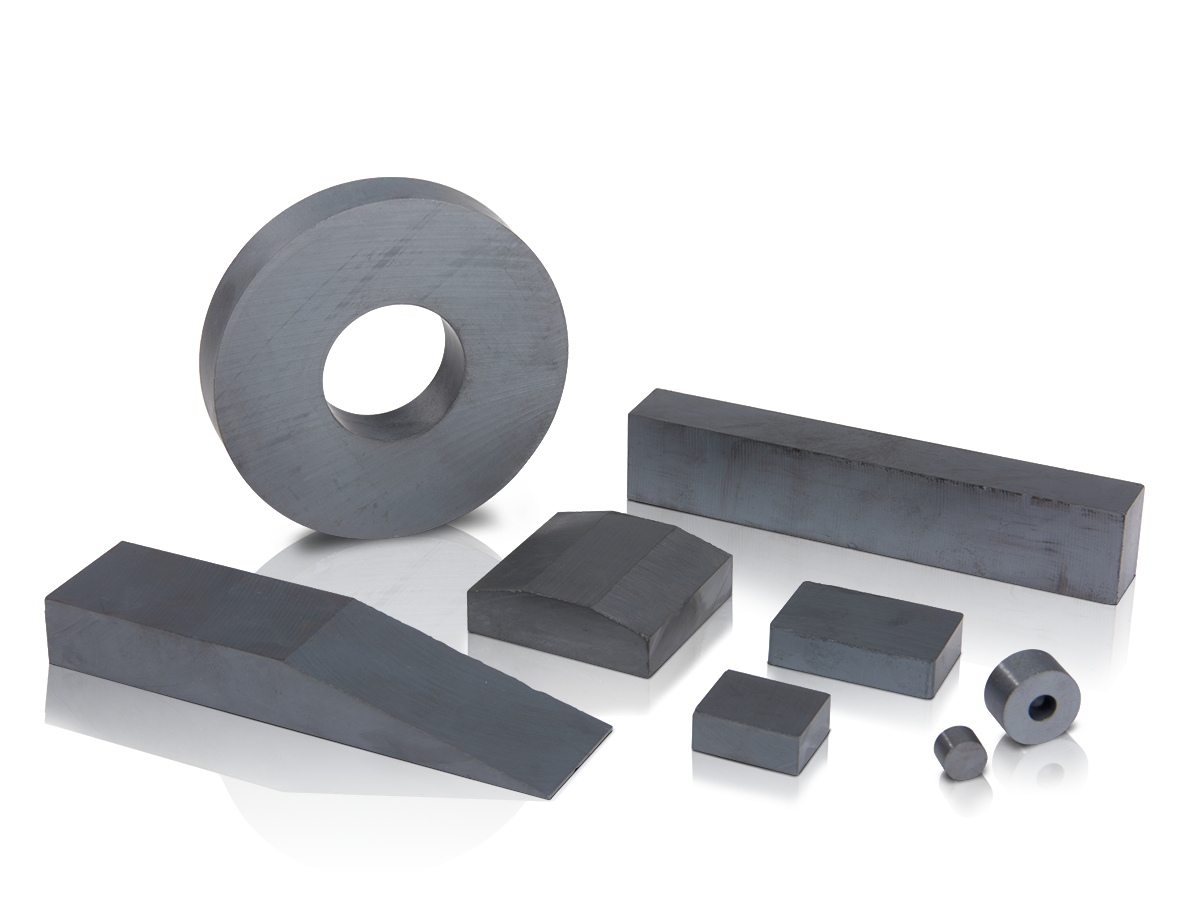
Ferrite magnets
Popular because of the affordable price and short delivery time. Good magnetic properties, high working temperature up to 300°C.

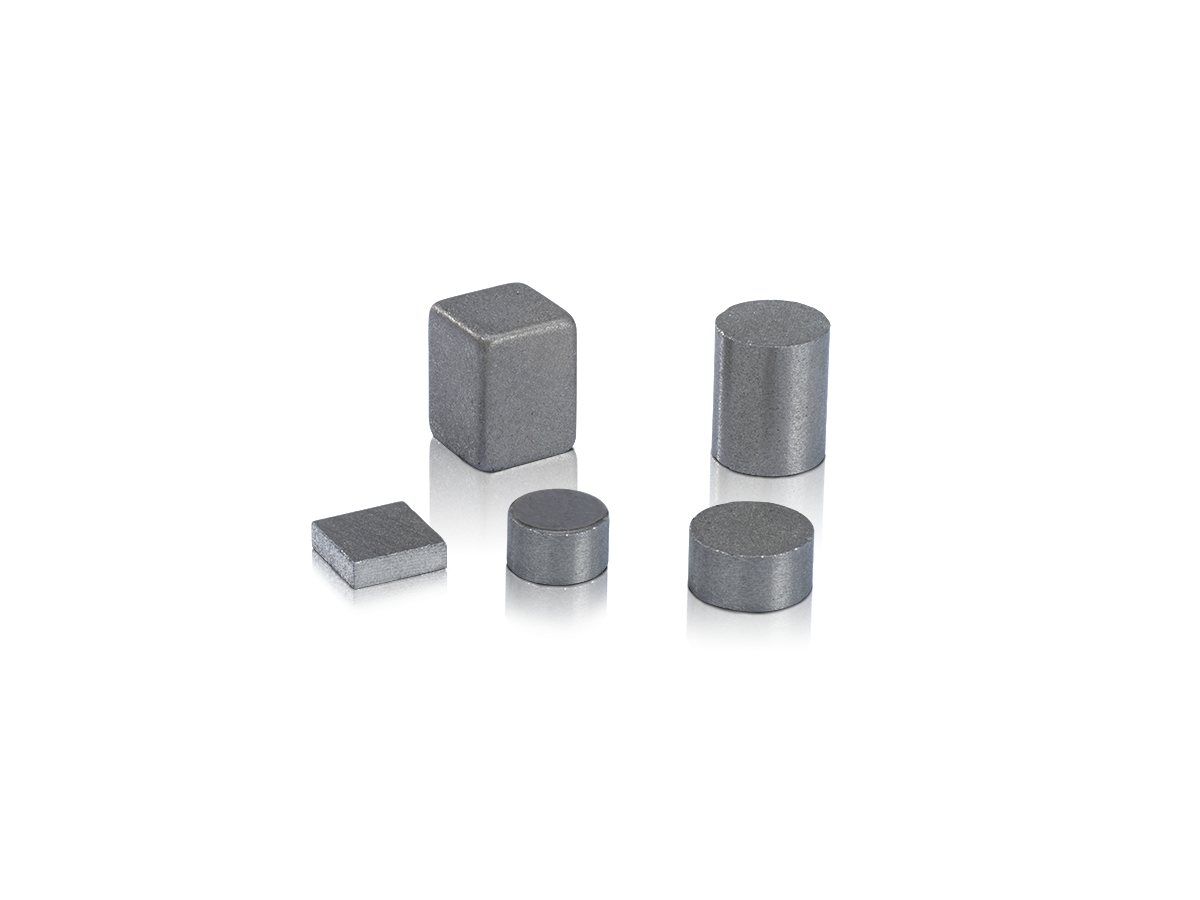
Samarium cobalt magnets - SmCo
Stable and strong, even in extremely low and high temperatures - up to 350°C. Excellent resistance to corrosion and demagnetization.

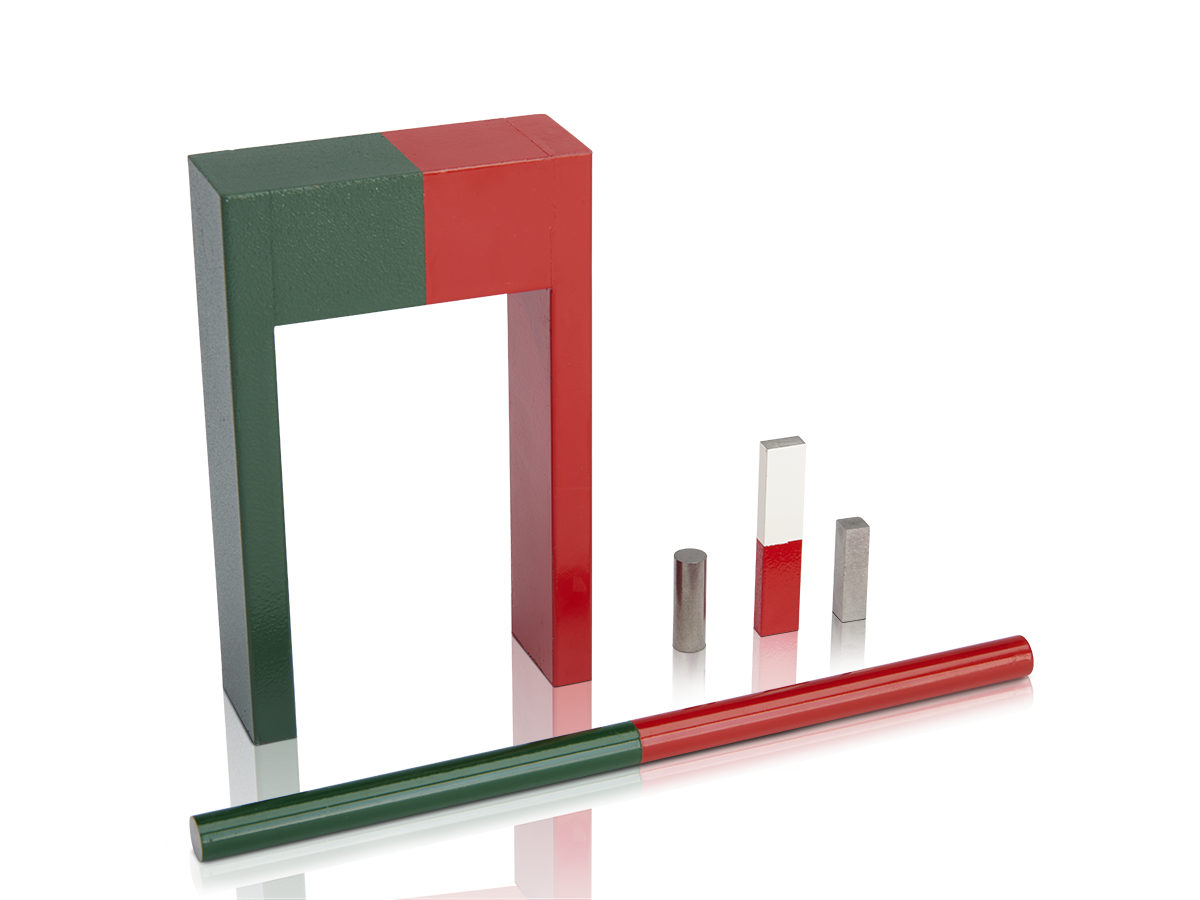
AlNiCo magnets
Highly heat-resistant magnet alloy - up to 450°C. Good resistance to corrosion and easy to (de)magnetize.

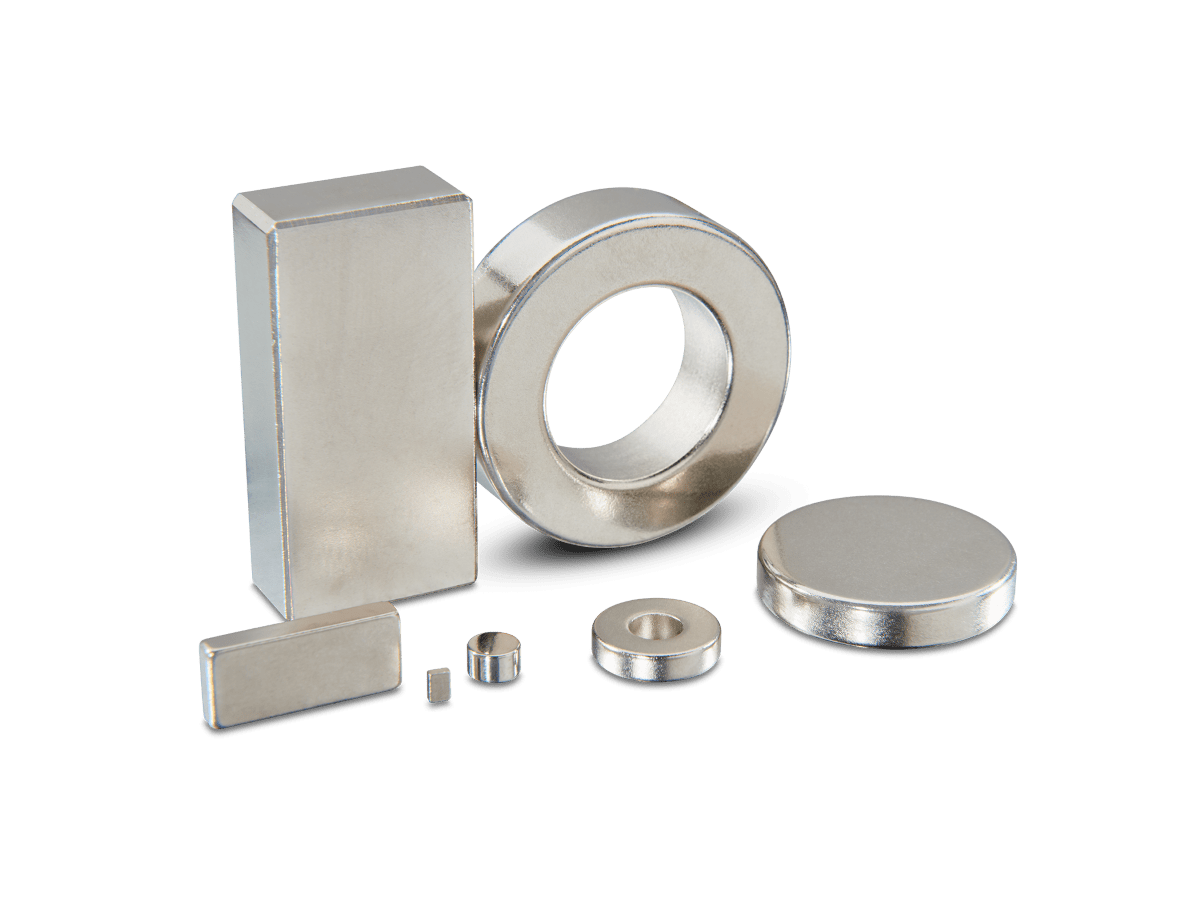
Neodymium - NdFeB stock magnets
Neodymium - NdFeB magnets in stock. Can be ordered directly.

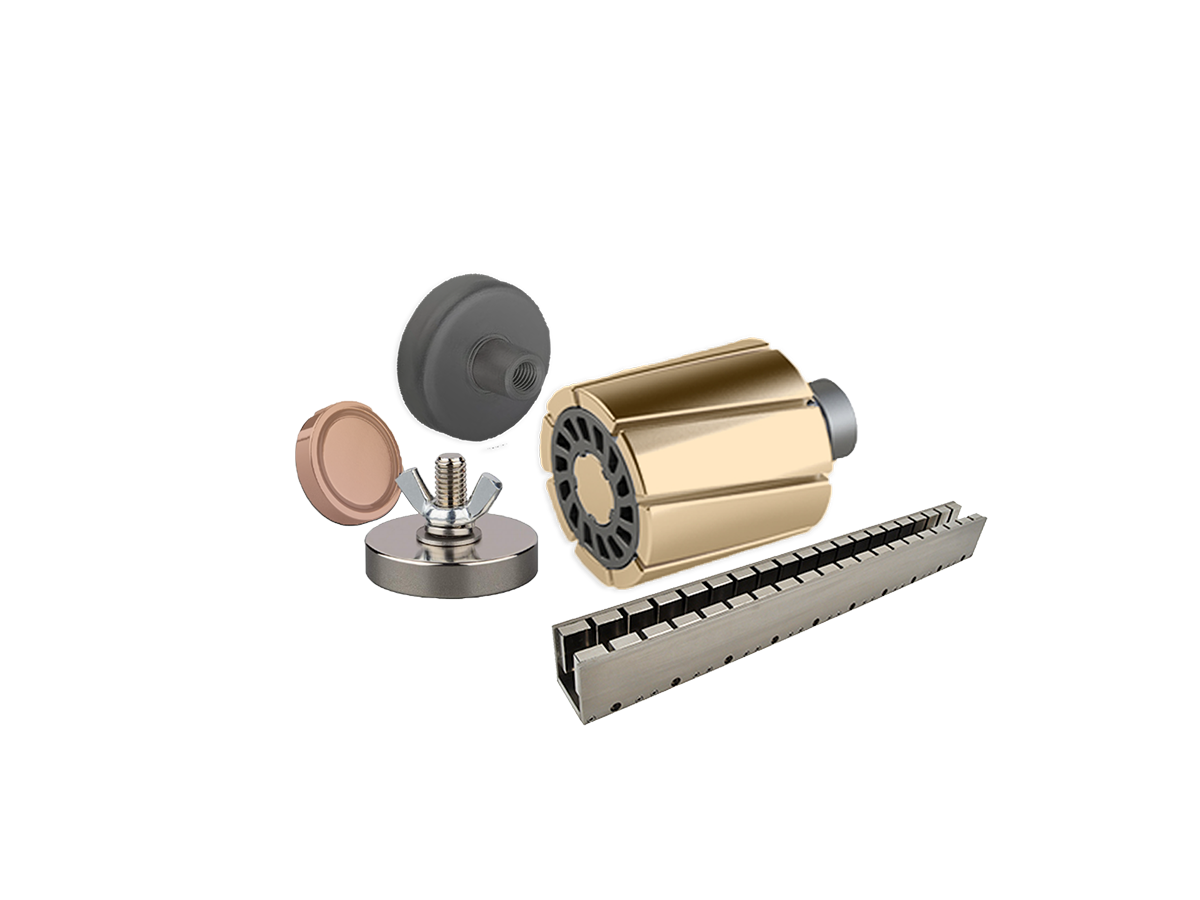
Custom assemblies
We design and build magnetic assemblies according to your specifications. For prototypes or serial production.

Permanent magnet materials and types
What is a good permanent magnet? The answer to this is complex and depends on the specific application. The various types are manufactured differently, from different materials and with different properties. The four main types of permanent magnets are: neodymium, ferrite, samarium cobalt and AlNiCo.
Permanent magnet strength and quality
Magnetic properties, such as magnetic field strength (remanence, Br), resistance to demagnetization (coercivity, Hc), and tensile force are often referred to as magnetic strength. These are all defining properties of a permanent magnet. However, the primary indicator of a permanent magnet’s strength is the BHmax. This is the maximum value of the energy product, measured in Mega Gauss Oersteds (MGOe). The higher the BHmax, the greater the magnetic field the magnet will generate in a given application. The BHmax of a magnet is the remanence (Br) multiplied by the coercivity (Hc).
The strongest magnets in the world are neodymium magnets. These are manufactured in different grades. Each class is given a name that immediately shows you which magnet is the strongest. For example, neodymium magnets vary from N35 to N52 quality. The number after the letter 'N' represents the maximum energy product of the magnet.
Temperature affects the individual performance of a magnet. Some types, such as samarium cobalt and AlNiCo magnets, perform better at high temperatures than others. Since if the operating temperature exceeds the maximum working temperature of a magnet, it will be permanently demagnetized. The magnetic field is then permanently lower in terms of strength and effect. That is why it is important to choose the right magnet material for the right operating temperature.
Magnetic field orientation and direction
We can magnetize permanent magnets in various directions. The term 'magnetic length' refers to the size of a magnet in the direction of the magnetic axis. Depending on the magnet material, there are various options such as:
- axially magnetized
- radially magnetized
- diametrically magnetized
- multipole magnetized
Physical characteristics
Most permanent magnets are brittle and cannot be used as structural components. Dimensions and tolerances vary depending on quality requirements, but magnets with a tolerance of ±0.1 mm can well be manufactured. Shape also plays a major role here, of course. Depending on the material, there is more or less choice. The most common magnet shapes are:
- magnet blocks (square magnets / rectangular magnets)
- disc magnets
- ring magnets
- cylinder magnets (rod magnets / bar magnets / cylindrical magnets)
- arc magnets (segment magnets)
- trapezoid magnets (wedge magnets)
Permanent magnets are often coated to improve their performance or protect against corrosion. For example, neodymium magnets are the strongest permanent magnets, but due to their high iron content they are the most susceptible to corrosion. The following coatings provide a solution:
- Ni-Cu-Ni: the most commonly used coating for corrosion protection in normal applications.
- Ni-Cu-Epoxy: susceptible to scratching, but has very good adhesive properties with high breakaway force.
- HDPE: thicker coating that protects against UV radiation.
- Parylene: ultra-thin, pinhole-free polymer coating with a superior abrasion resistance.
- Ni-Au: thin 24 carat gold layer on top of nickel coating. For medical applications.
- Plastic: super durable and highly corrosion resistant. Protects magnets from breaking on impact and prevents corrosion by creating a watertight barrier between the magnet and moisture.
Magnet customized to your product and application
Factors such as manufacturability, functionality, sustainability and safety determine the success of your product. For these design parameters Goudsmit has in-house specialists who will be happy to support you. Our engineers combine knowledge of fundamental physics with advanced simulation software to analyse, verify and optimize. This gives you certainty about the function of a magnet or magnet system even before the prototype phase.
Quality assurance and control
At our measurement laboratory, skilled QA/QC engineers use state-of-the-art measuring equipment, such as a permagraph, Helmholtz coil, CMM measuring equipment and a 3D scanner. We are therefore able to manage both the magnetic and the mechanical requirements. With specially developed measuring instruments, we can even measure the thickness of a coating layer or the magnetization angle. This guarantees you flawless components and saves you having to perform an input check.
The right certification for your industry
Your industry has its own set of requirements, guidelines and certifications. We have our business processes in place and are accredited for the following certifications:
- AS9120 for aviation and aerospace
- IATF for automotive
- ISO9001
- ISO14001
- Rohs & REACH compliant
Thanks to our experience in these industries, we can supply you with magnets quickly and efficiently. Naturally, we will ensure that all associated documents are provided in full and on time. With processes such as APQP, PPAP, FMEA, CP, SPC and MSA, you are always assured of the desired quality. This way you can focus on your core business, and we support you with our knowledge of magnetism.

